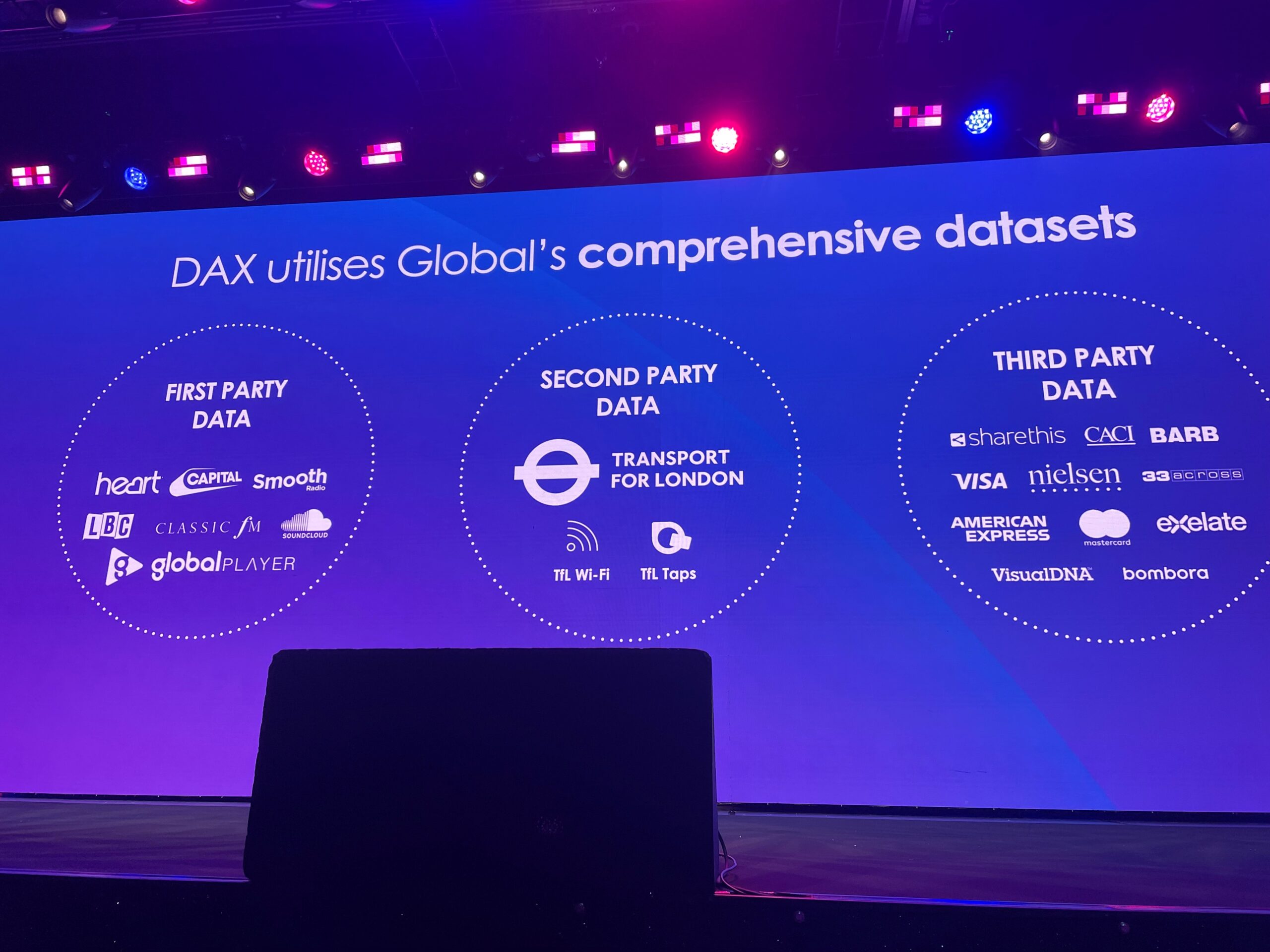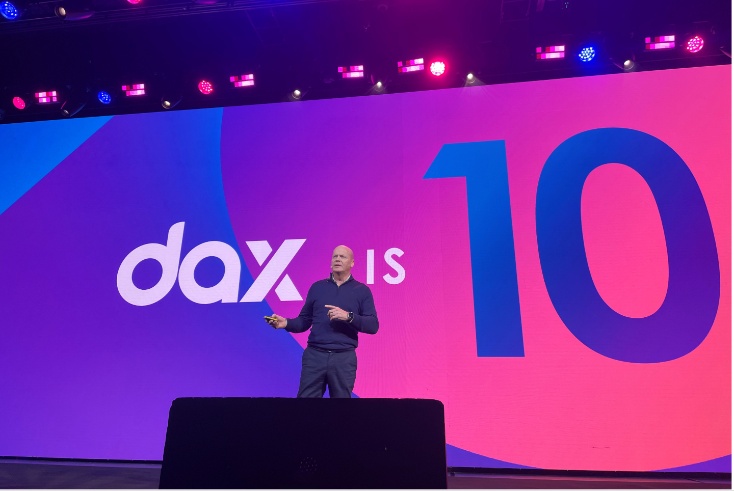“Dax has moved from being not just a part of our digital transformation but the epicentre of our entire business transformation.”
These were the words of Mike Gordon, chief commercial officer at Global, who spoke about the growing impact and innovation of its digital advertising platform at an event marking Dax’s 10th anniversary at London’s Outernet.
Gordon identified “three key themes” of targeting, creativity and outcomes that have remained “core values” for advertising and which are likely to still be the case in 20 years’ time. In fact, as Gordon told The Media Leader, Global was “very lucky” that it could apply adtech capabilities to “future-proof” the company’s two channels: audio and OOH.
Tommy Cattell, head of transformation at Dax, said agencies and clients were looking for targeting solutions based on quality data sources, scalable standout creative that makes a material difference to campaign performance and simple, holistic measurement solutions that make channels accountable.
At the event, Global aimed to address these three concerns with new innovations to Dax audience segments, precision targeting, programmatically enabled 3D outdoor and holistic audio measurement solutions.
10 years of Dax: A ‘game-changer’ in audio advertising
Answer to digital audio measurement
Tom Streetley, commercial director for Dax audio, presented a cookieless audio measurement solution, Dax ID, that works across all digital audio devices and environments.
Further to what he previewed at The Future of Audio and Entertainment in April, Streetley said: “Dax ID is our answer to digital audio conversion measurement in a post-cookie world and it gives advertisers insights across all digital audio environments and devices in a way that has never been possible before.
“It means that Dax ID will be the only digital audio media owner that can report on overall campaign conversion across all environments and devices, whilst also being able to look at the role that each environment and each device plays in delivering ads.”
This, Streetley stressed, was a far cry from how campaign performance could be examined previously — an approach that made a holistic view outside of silos “basically impossible”.
Dax ID uses a combination of IP address and user agents that is collected when someone listens to advertising or visits an advertiser’s website and this is then matched up with Dax’s custom modelling.
The methodology provides more accuracy as it can distinguish between two members of the same household’s ensuing activity after an exposure.
Streetley added: “We know that other media can struggle with reporting beyond the household level, but with Dax ID that is one of the core benefits absolutely baked into the methodology.”
Global to launch ID solution across all devices and environments
Cookieless audience targeting
Mia Mulch, group Dax director, revealed that Dax Audiences, its digital audio tool to target audience segments by interest and behaviour, would be decreasing its reliance on third-party data and will now be powered by Global’s first-party data to offer “more precise targeting solutions for advertisers”.
Global has been growing its consented first-party data pool from just over 2.5m users in 2020 to more than 9.5m in 2024.
Seven of Dax Audiences segments are now fully based on Global’s first-party data, including parenting, healthy living, grocery shopping, sports, small and medium-sized business, food and drink and credit cards. More segments will transition to be powered by first-party data over the coming months.
Dax’s beta test client saw an average 42% increase in response rate when it used Dax Audiences powered by first-party data compared with those based on third-party data.

Audio and outdoor ‘programmatically synced’
Mulch announced at the event that Dax audio and outdoor are now available to buy “programmatically synced”.
She called the ability to buy both channels under one roof “one of our superpowers” and allows campaign messaging and channel optimising to happen in real time.
Dax Audio campaigns are “dynamically monitored” to identify real-time spikes in listening patterns across the UK and this is then used to optimist Dax Outdoor to show site locations aligned with the listening spikes.
This creates “more cross-channel impact” by delivering campaign messages to an audience’s eyes and ears, according to Mulch.
In Q4, Uber’s campaign using programmatic syncing had a 35% higher recall than the benchmark, with 42% of respondents saying they intended to book a train ticket via the app.
Programmatic outdoor targeting and 3D formats
Meanwhile, Kloe Wells, commercial director for Dax Outdoor, explained that Dax Audiences can be replicated across all of Global’s digital panels to buy programmatically via Dax Outdoor.
In addition, Dax Outdoor could create a frame list to best reach a target audience that is curated by individual hour on each frame.
This means not only can advertisers choose the right location to reach their target audience, but also the exact hour in those locations to reach the maximum number of people — this is, according to Wells, “the most precision and flex that you can buy”.
Wells also revealed that Dax Outdoor has made 3D anamorphic creative available to buy programmatically in what she said was “a UK media first”.
Adwanted UK is the trusted delivery partner for three essential services which deliver accountability, standardisation, and audience data for the out-of-home industry.
Playout is Outsmart’s new system to centralise and standardise playout reporting data across all outdoor media owners in the UK.
SPACE is the industry’s comprehensive inventory database delivered through a collaboration between IPAO and Outsmart.
The RouteAPI is a SaaS solution which delivers the ooh industry’s audience data quickly and simply into clients’ systems.
Contact us for more information on SPACE, J-ET, Audiotrack or our data engines.






